#Aya Triada
Explore tagged Tumblr posts
Text
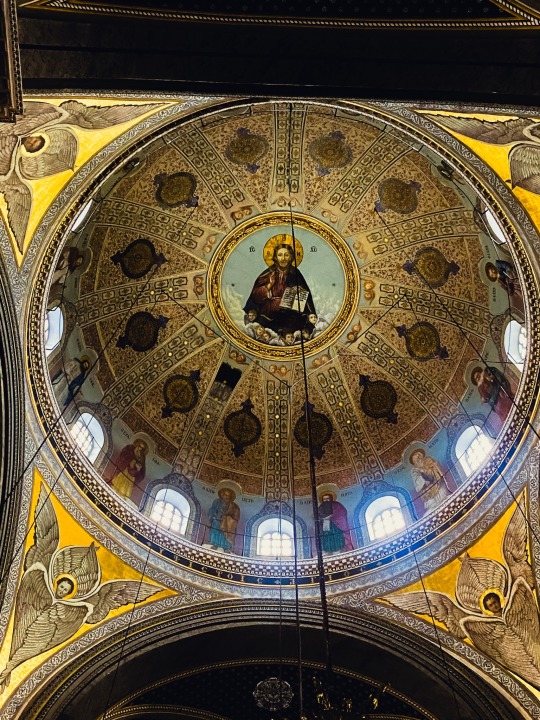
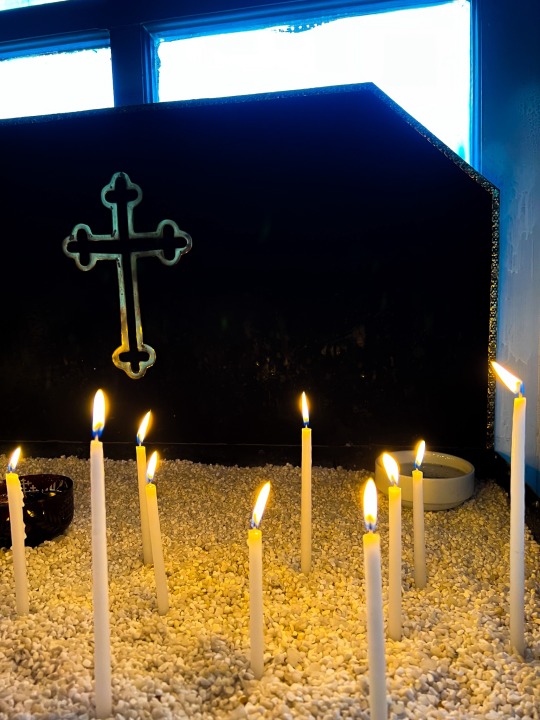
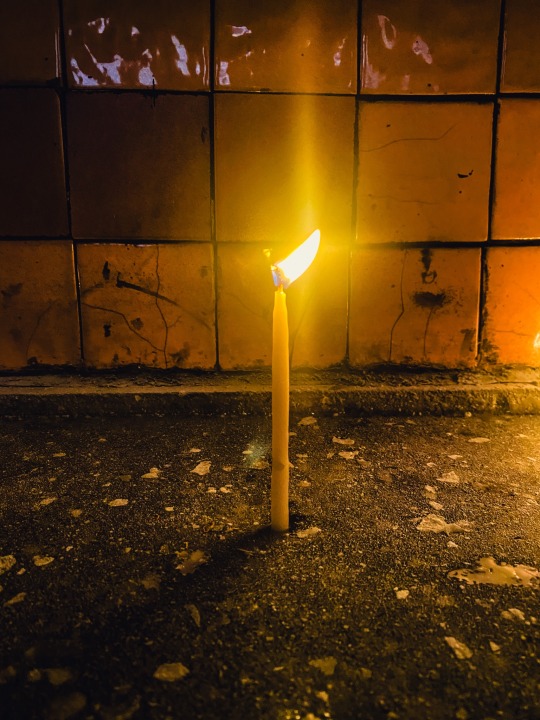

Desperate people find faith, so now i pray Jesus too🕯️.
Aya Triada/ Saint Antuan Churches. Beyoğlu/Taksim.
#aesthetic#turkey#art#istanbul#christiancore#christianity#history#religion#prayer#belief in god#jesus christ
4 notes
·
View notes
Text
Aya Triada’dan bir kadın: Athena Zaura… - Sevgül Uludağ
Atina Zaura, POGO tarafından ödüle layık görülmüştü… Resimde rahmetlik Athena Zaura, POGO Genel Sekreteri Skevi Kukuma ile… 1974 yılı sonrasında köyünü terketmeyerek Kıbrıs’ın kuzeyinde, Karpaz’daki Aya Triada’da (şimdiki adı Sipahi) tüm baskılara karşın hayatını sürdüren Athena Zaura, geçtiğimiz günlerde hayatını kaybetti ve düzenlenen törenle Karpaz’da, Aya Triada köyünde toprağa…

View On WordPress
0 notes
Text
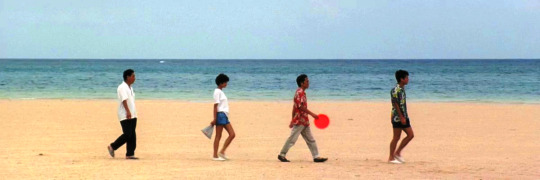
#ProyeccionDeVida
🎥 Cine Japonés. Homenaje a Takeshi Kitano, presenta:
🎬 “SONATINE”
🔎 Género: Drama / Comedia / Thriller / Crimen / Yakuza & Triada / Película de Culto
⌛️ Duración: 93 minutos

✍️ Guión: Takeshi Kitano
🎼 Música: Joe Hisaishi
📷 Fotografía: Katsumi Yanagishima
🗯 Argumento: Murakawa no es solamente un gángster, sino uno especialmente violento y agresivo. Es todo lo imprudente que uno puede esperarse de un yakuza o incluso más, y ha conseguido buenas influencias. Pero empieza a estar cansado de su estilo de vida, quiere cambiar. Varios yakuzas de Tokio son enviados a Okinawa para ayudar a terminar una guerra entre gángsters. El conflicto se intensificará y Murakawa se convertirá en una pieza fundamental.

👥 Reparto: Tetsu Watanabe (Uechi), Aya Kokumai (Miyuki), Ren Osugi (Katagiri), Masanobu Katsumura (Ryoji), Susumu Terajima (Ken), Yuuki Natsusaka (Murakawa-gumi kumiin), Ken'ichi Yajima (Takahashi), Tonbo Zushi (Kitajima) y Eiji Minakata (The Hit Man).
📢 Dirección: Takeshi Kitano
© Productoras: Shochiku & Bandai Visual.
🌎 País: Japón
📅 Año: 1993
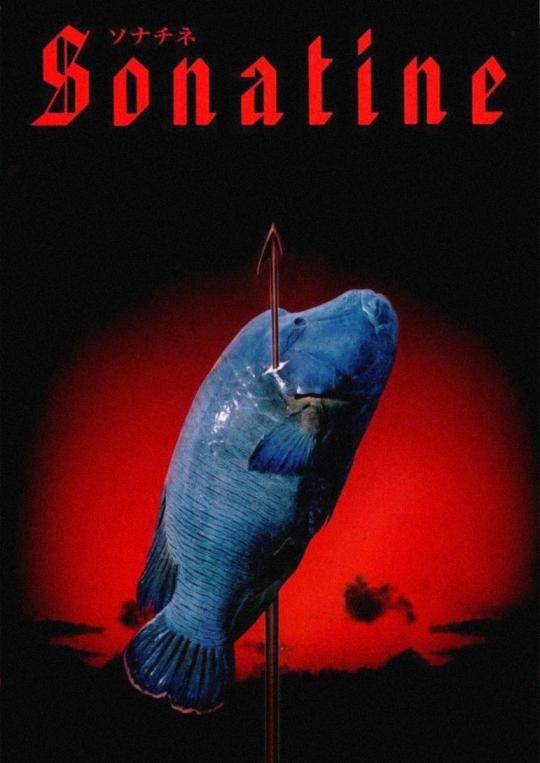
📽 Proyección:
📆 Jueves 06 de Febrero
🕖 7:00pm.
🏪 Cine Club de la Universidad de Ciencias y Humanidades (av. Bolivia 537 - Breña)
🚶♀️🚶♂️ Ingreso libre con DNI.
0 notes
Text
Día 24, últimas horas en Estambul
Claro, si vas por ahí te vas encontrando cosas gordas de la ciudad.

De hecho, hemos llegado nuevamente al Hipódromo frente a la Mezquita Azul, donde he aprovechado para hacer la foto al obelisco egipcio y la columna de Delphi que me faltó ayer.
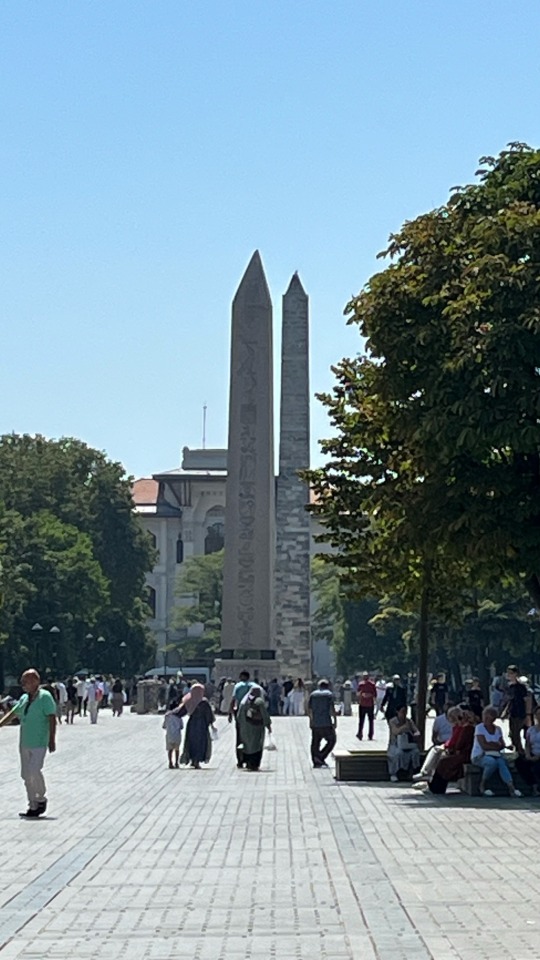
También hemos visitado la tumba (bueno, el Panteón) del sultán Ahmet - de ahí el nombre del barrio Sultanahmet.


Y así, a trancas y barrancas hemos llegado a casa, 12 kms de paseo después.
Tras un refresco merecido, hemos salido para agotar nuestras fuerzas y las posibilidades de la ciudad.
Cerca de Taksim, la iglesia ortodoxa de Aya Triada.
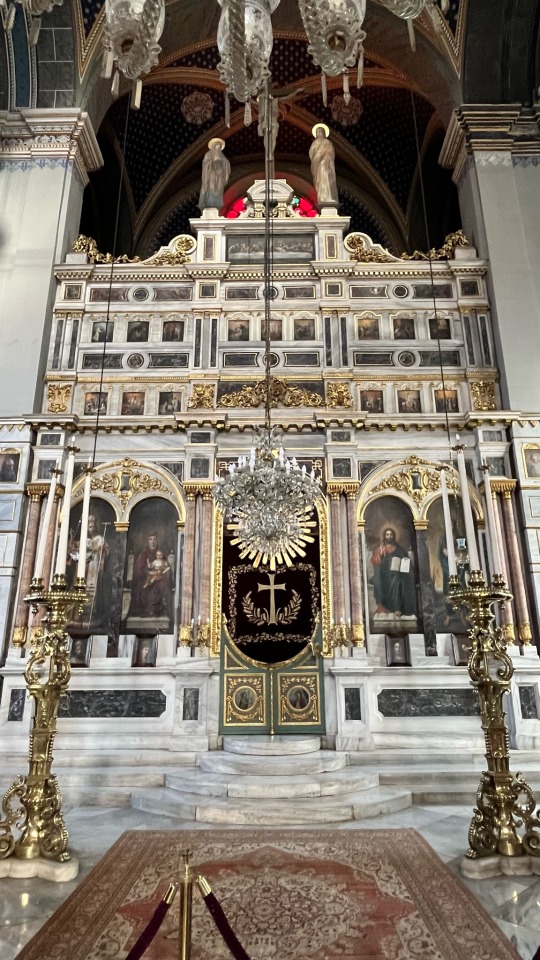

Como paso previo a comernos NUESTRO ÚLTIMO KÜNEFE!!!

Ranking final:
1- Konya
2- Avanos
3- Estambul
4- Kas
Y, ni cortos ni perezosos, hemos quemado las calorías yendo al Palacio de Dolmabahçe sabiendo que estaba cerrado, sólo por el placer de asomarnos al Versalles de Estambul.
Por eso, y por acercarnos por última vez al mar.

Hemos visto la mezquita de Dolmabahçe por dentro.
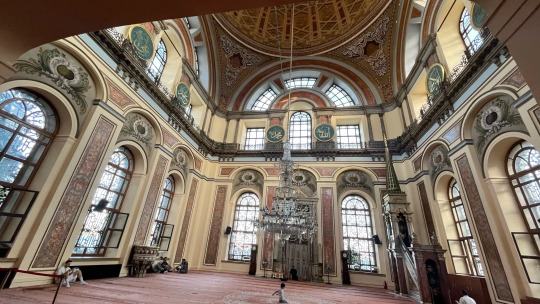
Y la puerta del Palacio por fuera.
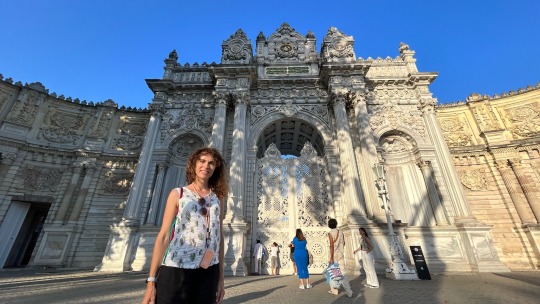
Y resulta que estábamos en el barrio de Besiktas!!
Hemos estado en territorio de Galatasaray y de Besiktas. Sólo nos ha quedado el de Fenerbahçe.
0 notes
Photo



Beyoğlu, İSTANBUL (07/2018)
Aya Triada Rum Ortodoks Kilisesi
Aya Triada Rum Kilisesi; İstanbul Boğazı’nın Rumeli yakasında Taksim İstiklal Caddesi Meşelik Sokak üzerinde 1879 tarihinde inşa edilmiştir. Taksim meydanına bakan, buna karşın girişi İstiklal Caddesi Meşelik sokaktan olan kilise İstanbul’daki en büyük Rum Ortodoks yapısıdır.
#aya triada#rum ortodoks kilisesi#kilise#church#ortodoks#hritiyan#christian#beyoğlu#taksim#istanbul#türkiye#turkey#seyahat#travel#gezi#seyahatname#travelogue
115 notes
·
View notes
Photo

Ceremonies for Aya Triada Basilica and Ay Filon Church The restoration work has been completed on Aya Triada Basilica and Ay Filon Church and ceremonies will be held on Saturday 21st September 2019.
0 notes
Text
La Moschea Taksim

La Moschea Taksim (Taksim Camii) in stile art déco presenta una altezza di circa 30 m, la stessa della chiesa ortodossa di Aya Triada e della chiesa armena Surp Asdvadzadzin Ermeni Katolik Kilisesi.
L'intenzione di realizzare una moschea a Piazza Taksim è nata agli inizi degli anni '50. Ma tra vicissitudini politiche e colpi di stato militari il progetto é sempre rimasto accantonato. Tra proteste, ostacoli legali e campagne mediatiche la costruzione della moschea riceve l'approvazione per la sua costruzione nel 2017 venendo inaugurata il venerdì del 28 maggio 2021.




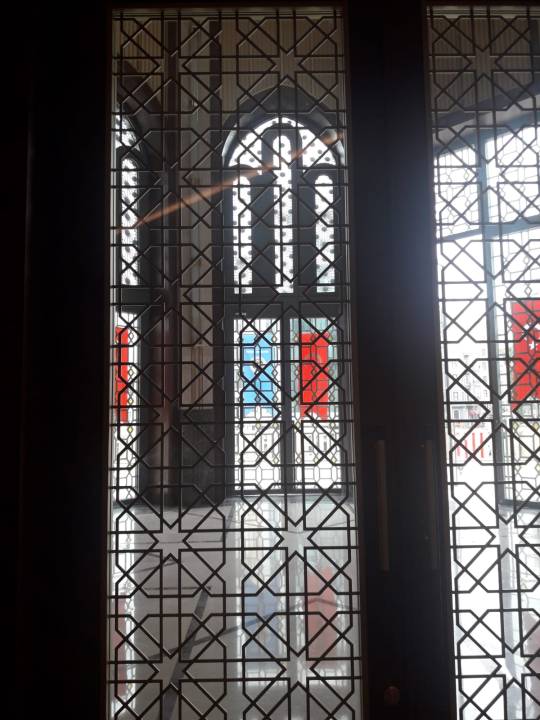
Qualche dettaglio:
La moschea presenta 2 minareti. Il piano superiore é riservato alle donne. La cupola ha una iscrizione di 7,5 metri che recita la Fatiha Suresi. ll müezzin mahfili, la speciale piattaforma di fronte al minbar dove il muezzin svolge il compito di chiamare alla preghiera, é posizionato a terra e non in alto come nelle grandi moschee di Istanbul. Nel mihrab, l'angolo che indica la direzione della Mecca, sono iscritti, con caratteri dorati, i 99 nomi di Dio.

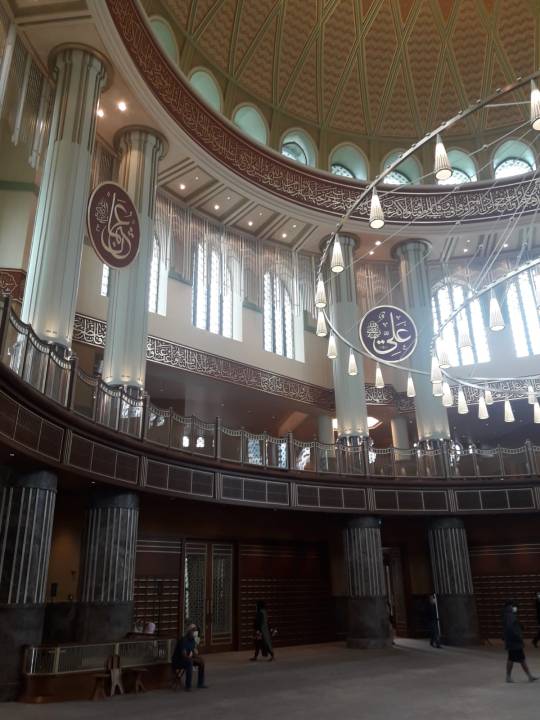
La mia Vita a Istanbul: consigli e informazioni turistiche. Disponibile come GUIDA per delle ESCURSIONI in città.
Scrivi una e-mail a: [email protected]
Seguici anche su www.facebook.com/istanbulperitaliani
12 notes
·
View notes
Photo

Aya Triada Kilisesi, 1879 Beyoğlu, İstanbul- Türkiye.
31 notes
·
View notes
Text
THE CHURCH YOU MISSED IN TAKSIM
I discovered this chapel one Friday morning, after having a satisfying breakfast of bread , yogurt and cheese. Besides a few nearby passer-bys servers and smoking in the back of a restaurant, there was no look of visitors on that block.
The entry to the main the main church was locked if I wanted to enter, and he expected. I wasn’t very certain that his goal was excellent, nevertheless the large anciently-styled skeleton key that he was retaining already revealed my curiosity's door.

Alone and cautious, I stepped towards it. So when quickly as I moved into the door, I realised that a direct access is wasn’ted by it. I was in a space somewhat like an ante room and instantly received by an old guard that is Turkish. He was garbed in a black clerical gown as well as a corresponding wrinkled look.
The church stood quiet and untouched. Two pets lay idly in the courtyard and that I couldn’t locate a signal that was comprehensible anywhere. I contacted among the waiters and questioned if it was okay to enter the church. He nodded and aimed in the open-door.
At last, I overcame my worry and agreed to his present.
Where my attention took me, now, look!
The inside was really one to observe. Our eyes widened and that I let out an indistinct “oh my god“.
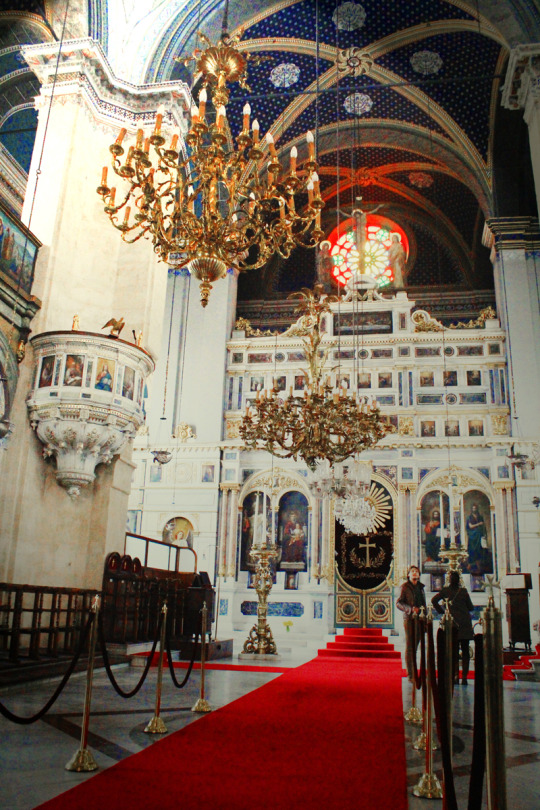
I stood in the nave, surrounded by Biblical paintings and ecclesiastical pews' middle, the feeling was empowering and amazingly tranquillising.
Aya Triada Kilisesi, or this Holy Trinity Church, is definitely a treasure somewhat saved in the hustle and regression of Taksim.
Posing for images at Taksim Square, nibbling on roasting chestnuts and crowding into all shops noted Indirim (Discount) in Istiklal Caddesi…most travelers did all of the above and risked missing out on a view of the stunning Greek Orthodox church.
It was totally unexpected. Life-size chandeliers, albeit begrimed, didn't neglect to add a perfect contact to the -ed threshold.
I unearthed that Aya Triada is Christian Orthodox residence of praise and 130 years of age. The reason why that it's consequently isolated is the fact that Religious churches from your Ottoman time were not permitted to face immediately onto the primary streets.
Absolutely pay a trip for this church on your day at Taksim in Istanbul!
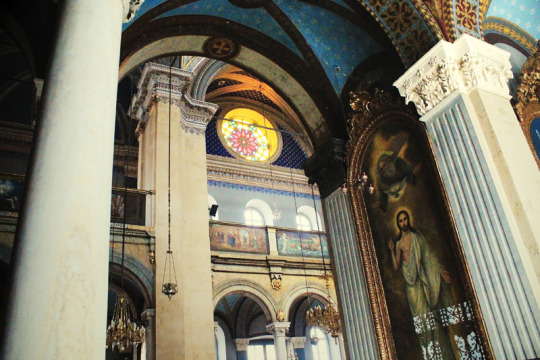
1 note
·
View note
Text
In the Search of Istanbul's Greek “Absences”
by Sergios Menelaou, ANAMED Post-Doctoral Fellow (2018–2019)

I have dreamed of living in Istanbul for as long as I can remember.
My desire and inexplicable force driving me towards this amazing city was to a large degree due to my archaeological and historical interest in the Byzantine past—owing to courses I undertook as an undergraduate student at the University of Cyprus, Department of History and Archaeology—and my personal readings of less academic nature.
Characteristically, the book of Alexandros Massavetas, ‘Constantinople: The City of Absences’ (2011) provides a historical account of the different districts of Byzantine, Ottoman, and modern Istanbul (especially focusing on the historical peninsula) from rather an experiential point of view, often creating vivid images for the reader. His attempt to record the history of this cosmopolitan city moves beyond a nostalgic and melancholic narrative of Constantinople's Greek past, but he rather surrenders to the magic present of today's Istanbul.
Nevertheless, one can clearly identify Massavetas' concern about the rapidly changing face and character of the city in such a drastic—and often destructive—way as to not help it but wonder: can we still, to this day, trace any elements of Istanbul's multinational and multilingual past? This social and historical division between the past and the present often seems unbridgeable to the visitor or at least to those that seek to unravel stories about the ethnic minorities (Greeks, Armenians, Jews).
Having this question in mind since moving to Istanbul in past September I have experienced this city in multiple ways, from immense excitement by the possibilities provided in social and cultural terms, but at times also having an overwhelming feeling of crowdedness—particularly in Istiklal Street—and secludedness by the realization of being unable to communicate in the same language with the locals—Turkish is the second official language in Cyprus but not having learned it has its obvious toll!
Being a short-term resident in Istanbul from Cyprus often has also its challenges. Given the political situation for almost five decades and the geographical dichotomy of the island between the North and South and its division in Greek-speaking and Turkish-speaking communities, I had prepared myself for having to put up with questions of national identity or even discrimination. To my pleasant surprise none of this happened and the people of Istanbul, especially the young and well-educated generation, share the same “European mentality” as the equivalent in any other modern city within the geographical and political limits of Europe. The city itself imposes to the visitor an artificial dichotomy, deriving from the historical, cultural, and political contradictions. Istanbul, being considered as a bridge between the East and West, due to its geographical position between Asia and Europe, creates a sense of almost mythical distance, for which one needs to wander and explore constantly, to expand their boundaries in a world of change.
So I had been unconsciously carrying this sense of natural boundaries and the loose definition of borderlines or even cultural and geographical limits greatly as an effect of my Cypriot nationality. But this has turned into a conscious subject of my research through my long involvement in the archaeological excavation project at the island of Samos in the Eastern Aegean. My work on the reconstruction of prehistoric connections between the East Aegean islands and western Anatolia, particularly through the ceramic evidence, is also reflective of this once again artificial dichotomy, as well as of modern political boundaries between Greece and Turkey.
While strolling around Istanbul, especially during my long weekend walks in Pera/Beyoğlu, Balat and Fener, along the Bosphorus and all the way up to Yeniköy, the question of modern national divide, archaeological boundaries and the surviving ethnic identities of the city's minorities has troubled me. I was struggling to imagine or reconstruct in my mind the organisation of the Rum communities at the end of the 19th and after the mid-20th century, the former representing their flourishing cultural and economic period while the latter follows their decline. In order to somehow grasp the extent and size of these communities one should take note of the dozens of Christian Orthodox churches built at about the late 19th/early 20th century. Of the most known are the Aya Triada off Taksim square, the Ecumenical Orthodox Patriarchate in Fener and many small churches in the same area and Balat, the Ayios Fokas church in Beşiktaş, Panayia Koumariotissa in Yeniköy, Ayios Nikolaos on Heybeliada and so on.
In the search for more Greek remnants one should look for the remaining schools, of which the most known among the five remaining in a city that once had sixty schools are the Zografeion High School located just a few meters from the Istiklal pedestrian, and of course the famous Phanar Greek Orthodox School, which forms an architectural landmark in Fener.

Aside the churches and schools, one can identify the Greek presence—or rather absence—by the impressive, marble-constructed houses the majority of which today stand in ruins in the area of Fener, Balat, and Pera. Occasionally, you can see an inscription of the owner's name and date above the door and the characteristic Ionian-style columns framing the entrance.
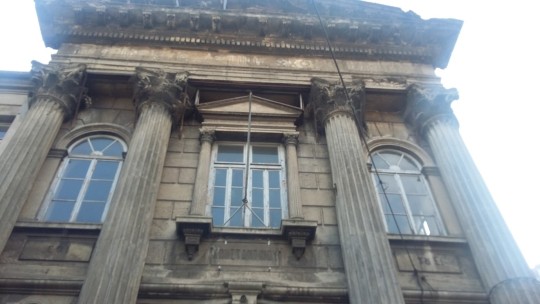
This sense of abandonment and absence is however contradicted by the active presence of Greek expats at Pera, either studying at one of Istanbul's universities or working. It is bridged by cultural events, the sharing of knowledge and the creation of ties between the two communities. This newly-established cooperation of the last couple of decades is encouraging and the best way to achieve this is by using one's senses. At Istos, an independent publishing house and cafe running since 2011 just off Istiklal, five minutes from ANAMED, you can always come across Greek-speaking customers, enjoy a Freddo Espresso (traditionally made in Greece and Cyprus) while reading one of the many books published in Greek, Turkish or even in both languages. Istos' work aspires to replace the existing spirit of nostalgia among the Rum community with a communal effort in promoting the intellectual resources of the minorities of Istanbul, intermixing these elements with the creation of a modern give-and-take cultural consciousness. This is further achieved by the Rembetiko music group “Tatavla Keyfi” and their regular shows, as well as the traditional Greek dance lessons every Saturday where one can witness people of various backgrounds dancing together and enjoying the sounds and movements of a Greek tradition.
Once in Istanbul you should strip off your preoccupations of any sort, let yourself get lost in sounds and smells, mingle with locals and foreigners and try to visualise the past and the promising future in the search of an ever-changing identity. It might not be always feasible to trace elements of these past minorities in a tangible manner, but their presence is on the buildings, the music and sounds, the very air of Istanbul itself. You just need to keep your senses loose and your mind open!
2 notes
·
View notes
Photo

@tatavlasahne • İlk destekçilerimizden koltuk sahibimiz sevgili Av. Leon Vasilyadis artık aramızda yok... Oyun öncesi ve sonrası kulis sohbetlerimizi, bizi izlerken koltuğundan bizimle oynayışını, repliklerimize eşlik edişini unutmayacağız; sezona ne yapsak derken elinde oyunlarla gelişini, harika çocuklar vallahi bravo deyişlerini özleyeceğiz, hem de çok! Ama bak o koltuk hala sana ait ve biliyoruz ki sen bizi hep izliyor olacaksın... Sevgili Leon Vasilyadis’i yarın saat 13:00’da Beyoğlu Aya Triada Kilisesi’nden son yolculuğuna uğurluyor olacağız.Tüm sevenlerine duyurulur. https://www.instagram.com/p/Cdqa1R-osiD/?igshid=NGJjMDIxMWI=
0 notes
Text
İlhan Berk / İstanbul benim atardamarlarımdan biridir

Bir kent; bir ağacı, bir kuşu, bir insanı, bir çarşısı, bir lokantası, bir sokağı anlatılarak var edilebilir mi? O şehir İstanbul, yazan da İlhan Berk ise var edilir. Şair, İstanbul Kitabı'nda, şehrin insan, tarih, coğrafya demek olan mitologyasını yazmak istediğini söylüyor.
İstanbul Kitabı adını taşıyor yeni şiirler toplamınız. İstanbul kenti sizin için hangi özellikleriyle önem kazanıyor. Açıkçası şiirinizde bu kenti birçok boyutuyla işlemişsiniz. Öne çıkarmak istediğiniz bir nitelik oldu mu?
- İstanbul Kitabı, 1944-1980 yıllarını kapsıyor. Kitap iki bölümlük. İlk bölüm, 1947'de çıkan İstanbul kitabımdaki şiirleri içeriyor. Ayrıca o evrede yazıldığı halde kitaba girmeyen altı uzun şiir de bu kitapta yer alıyor. İkinci bölümdeki şiirlerse, üç yıldır üstünde çalıştığım yeni şiirlerim. Mitologyalar dediğim bu bölümde: Lâle, Aya Triada, Güvercin, Kınalıada, Dolapdere, Elia Marvo, Cumhuriyet Lokantası, Kapalıçarşı, Çınar, Beyoğlu şiirleri var. Yıllardır İstanbul'u yazıyorum. Bir bölümü "Kül" adlı kitabımda çıkan bu düzyazı-şiirlerle İstanbul'un insan, tarih, coğrafya demek olan mitologyasını yazmak istedim. Çağımızın mitologya kahramanları artık tanrılar değil; insanlar, kentler, nesneler, hayvanlar. Bu yoldan İstanbul'u İstanbul'un bir ağacını (çınar), bir kuşunu (güvercin), bir insanını (Elia Marvo), bir çarşısını (Kapalıçarşı), bir lokantasını (Cumhuriyet), bir sokağını (Beyoğlu) böylece onu yazmak bu dünyada var etmek istedim. Mitologya dediğim bu. Bu olgu benim daha önceki kitaplarımda da (Galile Denizi, Atlas) var. Hem eski, hem yeni çağların bu büyük kenti, bu dükalık bütün boyutlarıyla vursun istedim. Öte yandan, İstanbul'u anlatmak gözümde daha da bitmiş görünmüyor bana. Benim atardamarlarımdan biri diye bakıyorum ona. Kentler hem benim hep konularım olagelmiştir.
Ulusallık olgusunu, yaratıcının dünyayı kavrayışına bağlarım
Şiir kuramı üstüne çok yazdınız. Sizce bir şair olarak Doğu-Batı kültürü çatışması içinde Türk şiirinin yeri ne olmalıdır? Bugün şiirimiz gelişkin bir şiir sayılabilir mi?
- Doğu'da da, Batı'da da birçok ozanların yaşadığına, yaşıyor olduğuna inanırım. Bu belki şiiri bir dünya şarkısı olarak düşünmek istememden geliyordur. Elimden geldiğince de bu ikiliği yok etmek isterim. Şiiri, şiirin yapısını, yani kendisini bu dogmadan kurtarmak gerekir. Yeryüzünde kapalı ekonomiler çağı geçti, dili zorlamak, ona dünyalık bir yapı kazandırmak gerek. Bu bir tekdüzeliğe gitmek değildir. Şiiri herkesin yapmaktır. Ben ulusallık olgusunu salt yaratıcıya, yaratıcının dünyayı kavrayışına, özümleyişine, yani kendi olmasına bağlarım. Ortada bir ozan varsa (dünyanın neresinde olursa olsun bu), ozansa bu, ulusaldır da. Sorun Doğulu olmak, Batılı olmaktan önce budur. Türk şiiri şimdi bu evrededir. Doğuyla da Batıyla da hesaplaşmaktadır. Kendi olmak için. Nâzım da, Oktay Rifat da öyle gelmediler mi bugünkü yerlerine. Bana gelince, kendime, bir kendime bakıyorum artık.
Çağdaş yazının konusu kentlerdir
Kentlerin şiirle anlatımı konusunda ne düşünürsünüz? Bir kentin tarihi, coğrafyası ve bütün panoraması şiirle çıkarılabilir mi?
- Çağdaş yazının konusu kentlerdir. İnsan yaşamı oralarda çörekleniyor da ondan. Şiir bu yüzden yatağını oralara sermiştir. Yalnız geçmiş değil, şimdi de, gelecek de orada boy gösteriyor. Bir yaşama biçimi koymaktır şiirin işi, kentlerden devraldığı budur. Daha ne istenir? Bir kentin tarihi, coğrafyası dediğimiz de bundan, bu yaşama biçiminden başka bir şey değildir.
(25 Eylül 1980 / Kaynak: https://core.ac.uk/reader/80953945)
0 notes
Photo
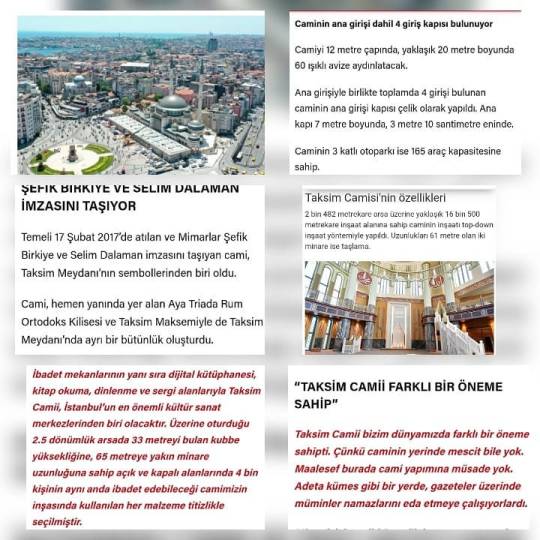
Taksim Camisi, yüzlerce kişinin katılımıyla ibadete açıldı Taksim'de temeli 4 yıl önce atılan cami, yüzlerce kişinin katıldığı cuma namazıyla birlikte ibadete açıldı. İstanbul Taksim'de temeli 4 yıl önce atılan, 2 bin 250 kişinin aynı anda ibadet edebileceği Taksim Camii'nde Cumhurbaşkanı ve AKP Genel Başkanı Recep Tayyip Erdoğan’ın katılımıyla ilk namaz kılındı. Namazı, Diyanet İşleri Başkanı Ali Erbaş, kıldırdıİbadete açılan camide ilk kez namaz kılmak için yüzlerce kişi Taksim Meydanı'nda toplandı. Diyanet İşleri Başkanı Ali Erbaş, minberde cuma hutbesini okudu. Erbaş,"Bu ulu mabetten doya doya istifade edeceksiniz inşallah. Gözümüz aydın olsun. Taksim Camii'nin hasretiyle büyüyen, ona olan ihtiyacı ve milletin beklentisini derinden hisseden, emeği geçen herkes için dua ediyorum. Rabbim sizden razı olsun. Aziz kardeşlerim, bugün bir vuslat günündeyiz" dedi. Erbaş, şöyle devam etti: "Bugün yaşadığımız ikinci büyük sevinç ve heyecan, fetih heyecanıdır. Yarın güzel İstanbulumuzun fetih yıl dönümüdür. İstanbul'un fethi sadece bir şehri almak değildir. İstanbul, peygamber efendimizin müjdesi ve ecdadımızın sevdasıdır. Bu fetih, çağı kapatıp çağı açan yeni bir dönemin başlangıcıdır. Aziz müminler, İslamla müşerref olan ve devraldığı İslam sancağını bir daha bırakmayan aziz milletimizin Allah'ın adını yüceltme gayreti tarih boyunca hiç eksik olmamıştır." Temeli 17 Şubat 2017'de atılan ve Mimarlar Şefik Birkiye ve Selim Dalaman imzasını taşıyan caminin hemen yanında Aya Triada Rum Ortodoks Kilisesi ve Taksim Maksemi yer alıyor. Camide otopark, sergi alanı, konferans salonu aş evi ve Dijital İslam Kütüphanesi de bulunuyor. Taksim Camisi'nin özellikleri 2 bin 482 metrekare arsa üzerine yaklaşık 16 bin 500 metrekare inşaat alanına sahiptir. Bu güzel eser için katkı sunan herkese çok teşekkür ederim. Rabbimiz, onlardan razı olsun. Dilerim bu eser kardeşimize, sevgi ve huzurumuzun artmasına vesile olsun. Amin inşaAllah. En içten dileklerimle selam ve dua ile. https://www.instagram.com/p/CPdBUrmM2Vy/?utm_medium=tumblr
0 notes
Photo

İstanbul’da en sevdiğim yapılardan biri . . . #sky #worldofdance #sky_high_architecture #world_photography_page #sky_collection #clouds_of_our_world #world_beautiful_landscapes #skyoftheday #worldsfinest #worldshots #cloudsinthesky #skychildrenofthelightphotography #landscape #architecturephotos #naturallandscape #cloudporn #kadrajımdan #zamanıdurdur #ig_turkiye #turkshutter #oneistanbul #deklanşörtürkiye #allshotturkey #shotoniphone11 #shotoniphone #amateurphotographers #mobilephotographer (Taksim Aya Triada Kilisesi) https://www.instagram.com/p/CKmFcMsB93L/?igshid=1nkeqcwu9fxoz
#sky#worldofdance#sky_high_architecture#world_photography_page#sky_collection#clouds_of_our_world#world_beautiful_landscapes#skyoftheday#worldsfinest#worldshots#cloudsinthesky#skychildrenofthelightphotography#landscape#architecturephotos#naturallandscape#cloudporn#kadrajımdan#zamanıdurdur#ig_turkiye#turkshutter#oneistanbul#deklanşörtürkiye#allshotturkey#shotoniphone11#shotoniphone#amateurphotographers#mobilephotographer
0 notes
